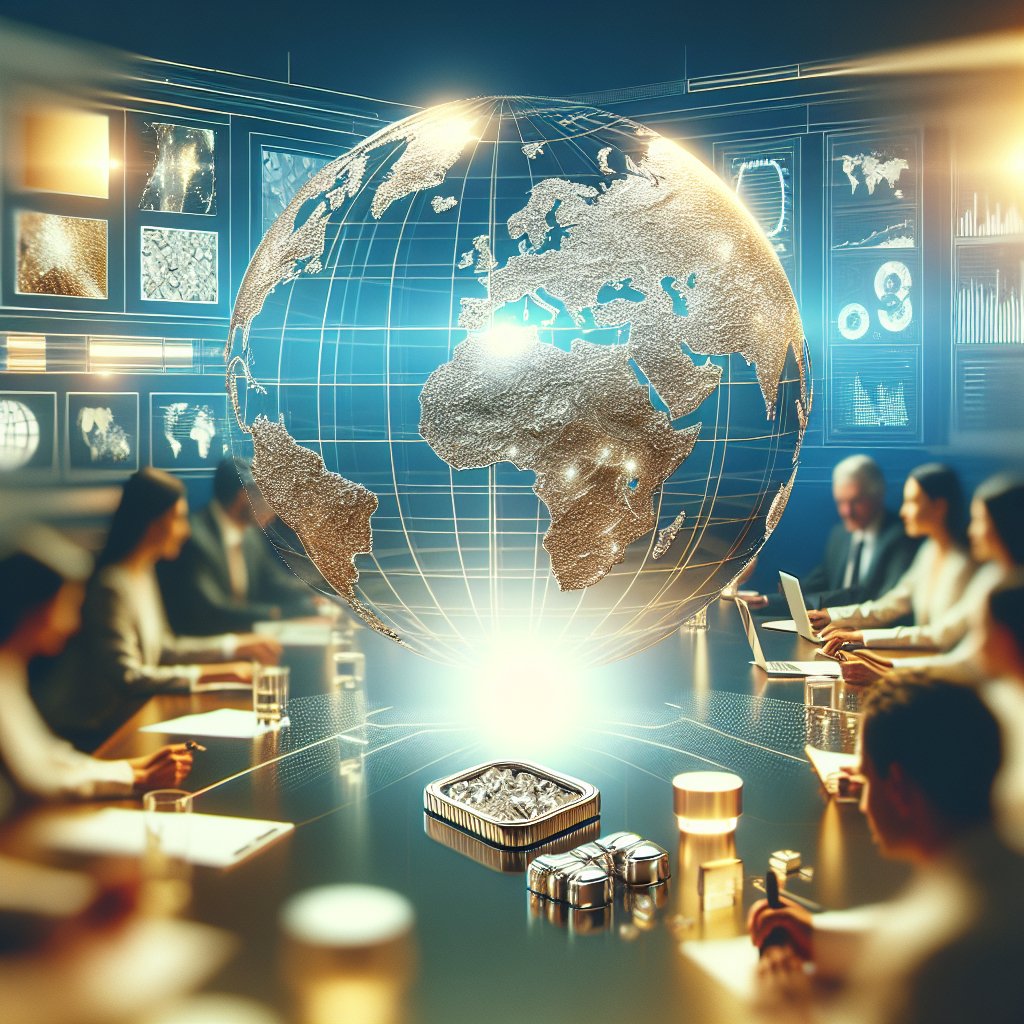The future of rare metals in the global economy is a topic of increasing importance as these materials play a crucial role in the advancement of technology and sustainable development. Rare metals, often referred to as rare earth elements, are essential components in a wide range of high-tech applications, from smartphones and electric vehicles to renewable energy systems and advanced defense technologies. As the demand for these metals continues to grow, understanding their impact on the global economy becomes ever more critical.
The Importance of Rare Metals in Modern Technology
Rare metals are indispensable in the production of modern technology. These elements, which include neodymium, dysprosium, and terbium, among others, are vital for manufacturing powerful magnets used in wind turbines and electric vehicle motors. The unique properties of rare metals, such as their magnetic strength and resistance to demagnetization, make them irreplaceable in these applications.
In the electronics industry, rare metals are used in the production of semiconductors, which are the building blocks of all electronic devices. Gallium, for instance, is used in the production of gallium arsenide, a compound that is crucial for high-speed and high-frequency electronics. Similarly, indium is a key component in the production of indium tin oxide, which is used in touch screens, flat-panel displays, and solar panels.
The defense sector also relies heavily on rare metals. These materials are used in the production of advanced weaponry and communication systems. For example, samarium-cobalt magnets are used in precision-guided munitions, while yttrium is used in laser targeting systems. The strategic importance of these metals cannot be overstated, as they are critical to national security and defense capabilities.
As technology continues to evolve, the demand for rare metals is expected to increase. The transition to renewable energy sources, the proliferation of electric vehicles, and the advancement of communication technologies all depend on the availability of these materials. Consequently, the global economy must adapt to ensure a stable and sustainable supply of rare metals.
Challenges in the Supply Chain of Rare Metals
The supply chain of rare metals is fraught with challenges that have significant implications for the global economy. One of the primary issues is the concentration of rare metal production in a few countries, particularly China, which accounts for a significant portion of the world’s supply. This concentration creates vulnerabilities in the supply chain, as geopolitical tensions or trade disputes can disrupt the availability of these critical materials.
Moreover, the extraction and processing of rare metals are environmentally and socially challenging. Mining operations often result in significant environmental degradation, including habitat destruction, water pollution, and greenhouse gas emissions. Additionally, the processing of rare metals involves the use of hazardous chemicals, which can pose health risks to workers and surrounding communities.
Efforts to diversify the supply chain and reduce dependence on a single source are underway. Countries are investing in the exploration and development of rare metal deposits within their own borders. For instance, the United States and Australia are actively seeking to increase their production capacities to reduce reliance on imports. Additionally, recycling and recovery of rare metals from electronic waste are gaining traction as sustainable alternatives to traditional mining.
However, these efforts face significant technical and economic challenges. The recycling of rare metals is complex and costly, and the development of new mining operations requires substantial investment and time. As such, ensuring a stable supply of rare metals will require coordinated efforts from governments, industries, and research institutions worldwide.
The Role of Innovation and Policy in Shaping the Future
Innovation and policy play crucial roles in shaping the future of rare metals in the global economy. Technological advancements in mining, processing, and recycling are essential for improving the efficiency and sustainability of rare metal production. For example, new extraction techniques that minimize environmental impact and reduce energy consumption are being developed. Similarly, advancements in recycling technologies are making it more feasible to recover rare metals from electronic waste.
Policy measures are also critical in ensuring the sustainable management of rare metal resources. Governments can implement regulations that promote responsible mining practices and encourage the development of domestic supply chains. Additionally, international cooperation is necessary to address the global nature of the rare metals market and to ensure fair and equitable access to these resources.
Investment in research and development is another key factor in securing the future of rare metals. By funding innovative projects and supporting collaboration between academia and industry, governments can drive the discovery of new materials and technologies that reduce the reliance on rare metals. For instance, research into alternative materials that can replace rare metals in certain applications is ongoing and holds promise for reducing demand.
In conclusion, the future of rare metals in the global economy is shaped by a complex interplay of technological, economic, and geopolitical factors. As the demand for these critical materials continues to rise, addressing the challenges in their supply chain and promoting sustainable practices will be essential. Through innovation and policy, the global community can ensure that rare metals continue to support technological advancement and economic growth while minimizing their environmental and social impacts.












